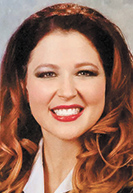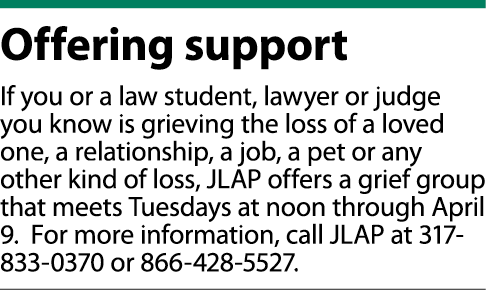Subscriber Benefit
As a subscriber you can listen to articles at work, in the car, or while you work out. Subscribe Now Hart
HartBy Ashley Hart
Life can change in an instant; we can become defined by the person we were before that instant, and the new person we must become in the aftermath. Almost 16 years ago, I experienced that instant, on a not-so-very-special sunny June day. It was the kind of moment that makes your heart stop, sends an incredible punch to your gut, and simply stops time. My family had strangely been unable to contact my brother for several hours, and believe me, he was never a person not to answer his phone. Out of concern, my mother traveled to his apartment and with the assistance of the landlord entered the property. She was on the phone with me when she walked through the door to find my brother unresponsive. I remember that my hands could not seem to hold on to the phone, as it crashed to the floor causing the battery to become disconnected. In the silence, I would never have imagined that my sibling would have taken his own life at 18. There was no warning and no chance to say goodbye. I was unprepared for such a hole, such a bomb that would wreak havoc on my family. Perhaps what I was most unprepared for was the grief, or the shards of glass and shrapnel, that would set in once the dust from the explosion had settled.
I wanted to learn everything there was about how I was feeling, how I was supposed to handle pain, or what my role was now. In some ways you might say I “chased” grief, personally, professionally, and academically, to understand it. That quest has led me to work with the legal community in walking the journey of grief and loss by piloting a grief-specific support group with the Indiana Judges and Lawyers Assistance Program (JLAP). Law students, lawyers, judges, and members of the legal realm are no more immune to grief and loss than the next person; it does not discriminate. In an adversarial system, we learn about loss: one side wins, one side loses, or sometimes where there is no clear victor, each side gave up something. Yet, no one gives us the roadmap for grief intertwined with loss.
Grief — we have named it, but what is it? According to Debra Holland, author of “The Essential Guide to Grief and Grieving,” “Grief is a profound feeling of sadness and pain caused by an important loss, change, crisis, or failure, either actual or perceived.” An important takeaway is that grief has many forms and loss is vast. You must first define your loss. Have you lost a loved one, ended a relationship or friendship, said goodbye to a pet, experienced caring for an aging parent, felt “an empty nest” now that children are gone, encountered health limitations, left a job, lost a case or a client? Are there multiple losses in rapid succession? Our losses are not meant to be compared in a “Grief Olympics” competition; rather, they are to be respected as individual, unique and of equal magnitude when shared with others.
I know why I hurt, but I do not understand the feelings associated with it. “Grief is like having broken ribs. On the outside you look fine, but with every breath, it hurts.” – Author unknown
Elisabeth Kubler-Ross developed a framework in her “Five Stages of Loss” while working with the dying. Step one, we are in denial or shock surrounding the loss; step two, the secondary emotion of anger takes over, leaving pain ruminating underneath; step three, we negotiate or bargain with our faith or a higher power asking “what if” and “if only”; step four, we slip into depression as we begin to process the loss, and; step five, we attain acceptance with what has happened to us. I find this particularly helpful with lawyers; we like standards of review, legal tests for analysis, and rules of law. They are disappointed when I tell them we cannot tie grief up in a neat bow. The stages of grief and loss are merely a starting point; they are not linear, and you may never experience some, or continuously repeat others. Grief is messy and gritty, often there is no timetable for grief, and more recent grief research is moving away from the teachings of the stages framework or providing clarification in understanding them.
Is it all in my head? Why do I physically hurt? Megan Devine, author of “It’s OK That You’re Not OK,” reminds us that “grief is a full-body, full-mind experience . . . your entire physiological system is reacting, too.” When we do not talk about our grief, it is much like a tea kettle on a hot stove with building pressure that must go somewhere; if we do not release grief intentionally, the body will release it for us somatically. In a society and culture that would tell us otherwise, grief is a normal reaction to loss. We must normalize grief to become vulnerable enough to work through it. As Dr. Earl A. Grollman, pioneer in crisis intervention, stated “Grief is not a disorder, a disease or a sign of weakness. It is an emotional, physical and spiritual necessity, the price you pay for love. The only cure for grief is to grieve.”
Is grief treatable, and can I recover? In a group or individual consult with the grieving, I wish I had this answer for them and for myself. I often tell them if my arm was broken, there would be a protocol for how to heal the bone. But there is no such protocol for grief. What surrounds the broken bone is the cast that gives the body an immobilizing tool to heal from the inside, in time. Our external community of resources, friends, family, and the catharsis of telling our stories is like the “cast” for grief. As a poignant Turkish proverb signifies, “He that conceals his grief finds no remedy for it.” We have to “lean into” pain. Sometimes that may mean we say: this hurts, I hurt, and that is okay. For those fortunate to be the trusting confidant assisting the griever, sometimes the best support one can give is to provide a hand to hold and a listening ear; magic words are hard to find and words are not necessary to provide support.
 How do I “lean in” to grief? In the group sessions I have led, we spend distinct time to invite “grief” to the table for dinner. I find this to be a powerful exercise in discussing what grief means to the griever and the impact it leaves. If you could have a conversation with grief, what would you say? Does grief have a name, an image, a color? How do we know it is there? Would you scream at grief or shed tears in grief’s presence? Maybe we invite grief multiple times, at different points of our lives, and perhaps our conversations would change.
How do I “lean in” to grief? In the group sessions I have led, we spend distinct time to invite “grief” to the table for dinner. I find this to be a powerful exercise in discussing what grief means to the griever and the impact it leaves. If you could have a conversation with grief, what would you say? Does grief have a name, an image, a color? How do we know it is there? Would you scream at grief or shed tears in grief’s presence? Maybe we invite grief multiple times, at different points of our lives, and perhaps our conversations would change.
For me, I talk about that sunny day that I will never forget. And as a musician, I think I might share these Kenny Chesney lyrics to the song “Who You’d Be Today” in my discussion with grief: “Sunny days seem to hurt the most, I wear the pain like a heavy coat, I feel you everywhere I go … It ain’t fair you died too young, like a story that had just begun, but death tore the pages all away …” And while I do not have the luxury of knowing who my brother would be today, I do know that his story has led me to the person I am today. One who is proud to walk with others on the grief journey, to laugh with them and to cry with them, and to remind them that there is hope, there is light, and certainly, there is love.•
• Ashley Hart, Esq., MSW, is a law clerk to U.S. Magistrate Judge Mark J. Dinsmore and serves as a member of the Judges and Lawyers Assistance Program Committee.
Please enable JavaScript to view this content.
